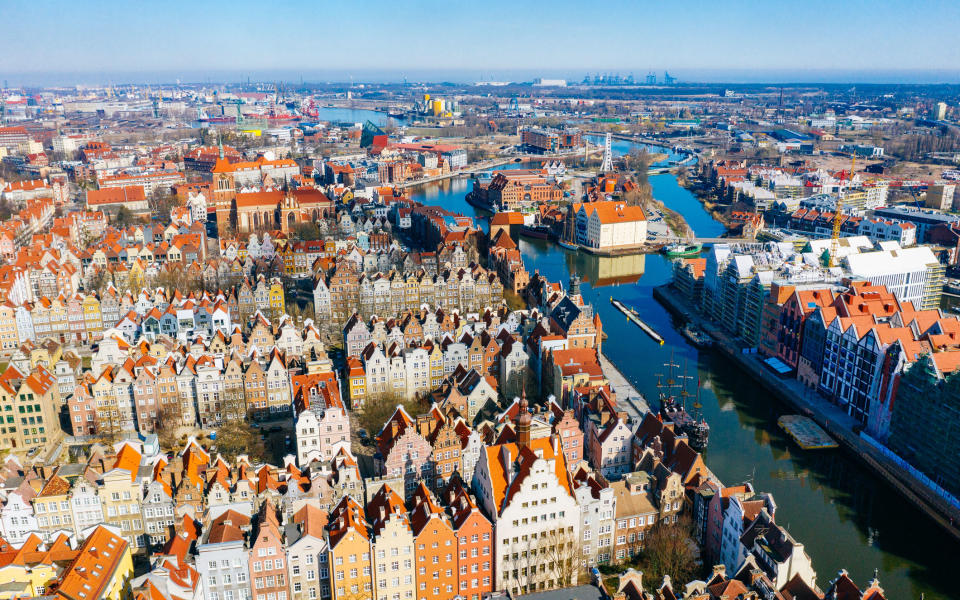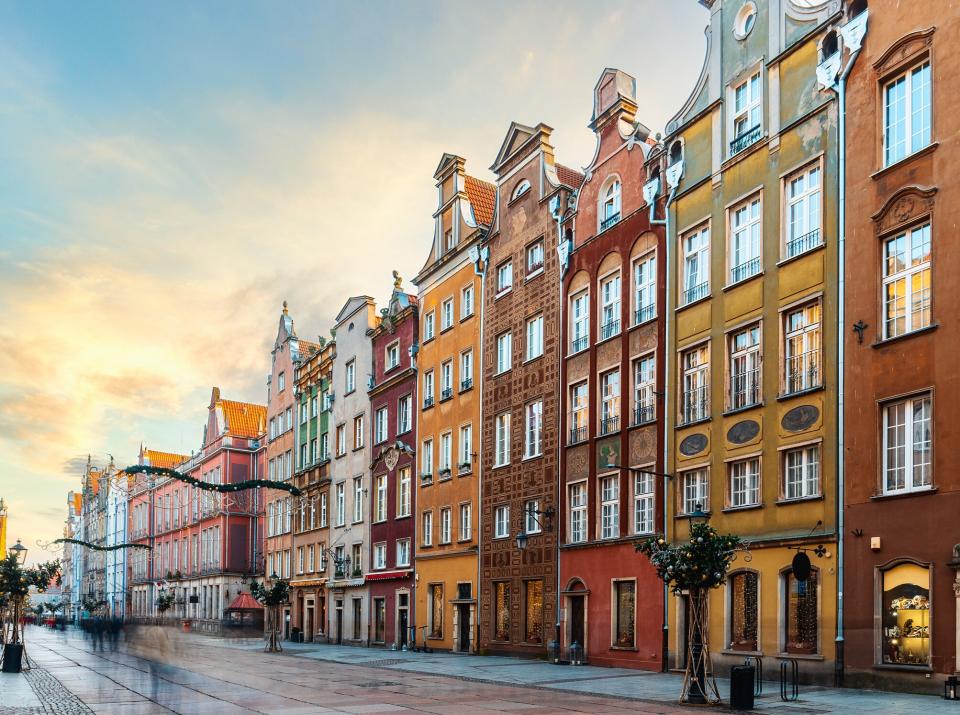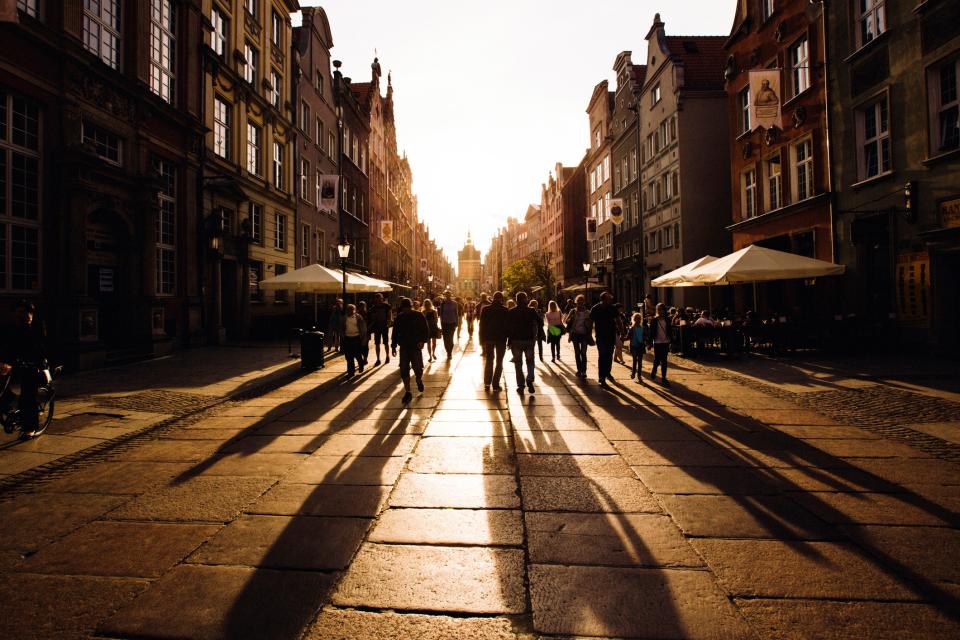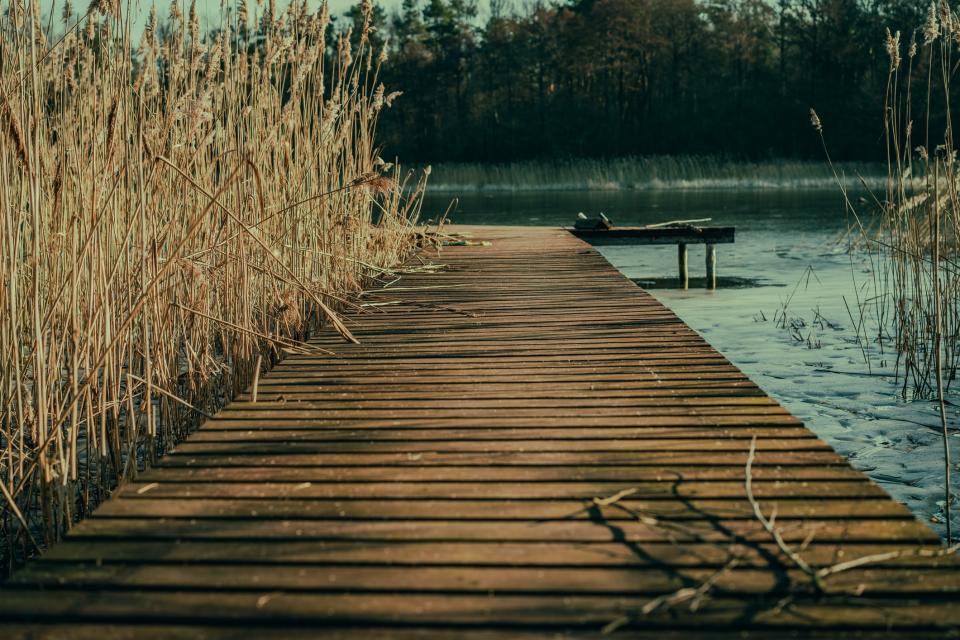A weekend to remember in the Polish city where the first shots of the Second World War were fired

I’m not sure at what point travel for me began to be less about exploration and more about annual repetition in luxurious surroundings – but I know the moment I realised that had to change. Two summers ago, when my teenage son stopped off in Barcelona on his way home from a holiday in Mallorca with his mum, I suggested he and his friend stay there for a few days then travel home by train through France.
“Yes!” he snapped and I felt jealous of what lay ahead of him. I knew I had to rediscover impromptu travel to new places.
That is why I found myself walking around Gdansk, Poland, on a guided history tour. I’d decided to take up an invitation from my friend Vernon, whose friend Frank had written a book about his father – a Second World War resistance hero in Poland. What better reason to visit?
Gdansk is where Lech Walesa climbed over the shipyard wall and started a trade union, Solidarity, creating one of the first cracks in the decline of Soviet communism. Like everyone else, I had watched the Solidarity story play out nightly on the news in the early 1980s. Beyond that, I knew nothing about the city and very little about Poland. So when Vernon sold it to me as “a trip to the city where the first shots of the Second World War were fired”, I booked my flight with a group of friends – all £55 worth, flying from Stansted.
The five of us had varying degrees of interest in our destination. Vernon and I were fans of the History Channel and Antony Beevor. My old NME colleague and photographer, Martyn Goodacre, was just there for the ride. Frank Pleszak, mentioned earlier, was not just a published author but an expert on the plight of the Poles in the gulags.

Mark Reeder, a record label runner and DJ, had left Manchester in the late 1970s to live in Berlin and had a love of all things Eastern Bloc. For years he had dressed only in military uniform, and on this trip wore the same black American Swat uniform for four days.
My understanding of Poland, from friends who had visited, was of a grey concrete place – but Gdansk was a revelation. In this Baltic port, built by the Teutonic Knights, there is an ever-present sea freshness in the air. Rebuilt after the Second World War, it’s the sort of place you wander around on a warm autumn night, looking at the restaurant lights twinkling in the river and thinking: “I’ll come back.”
Now that Poland is on the UK’s “safe” list of countries that can be visited without restrictions, there is even more reason to do so. There are great museums, old and new, not to mention Lechia Gdansk football stadium, which I’d glimpsed from the plane and seized upon as the reason for a return visit.
Our tour with local guide, Beata, began at the post office and the gleaming statue where German and Polish communities took up arms in what many say was the first skirmish of the Second World War. Winding our way through small squares and tree-lined streets, we passed a bunker-turned-wine-bar and a family ice cream parlour.
When we stumbled across a military uniform shop, Mark couldn’t believe his luck. Cursed by impulsivity, I bought a suit of Polish Army winter camouflage gear, including a coat, fleece and trousers, for £130. Great value, it would impress my five-year-old if no one else.

We soon came to Solidarity Square with its three huge crosses, a monument to shipworkers who died in the 1970 riots against Communist rule. Behind it stands the rust-coloured box of the European Solidarity Centre, fronted by fountains and pools. It’s a tribute to a movement that delivered democracy.
Across a field from here is a former submarine manufacturing base that was cunningly disguised as an office block. Inside are faded signs saying “Torpedo Lagerhaus” (which sounds like a submariner’s pub) and a large meeting room filled with models of ships once proudly produced here. Before the decline of the economy in the 1980s, the shipyard was producing 100 ships a year, which more than halved with the introduction of martial law.
Two hours’ drive south-east of Gdansk are the Masurian Lakes – and specifically Ketrzyn, where you will find the 30-plus bunkers and buildings that make up the “Wolf’s Lair” where Adolf Hitler spent 800 days directing the Eastern Front.
History hangs heavy in the air at the lair. It feels eerie to roam the pathways from building to building. There are huge slabs of concrete, collapsed and covered in moss, some graffiti, large yellow signs forbidding entry, and a reference number for your guide book. “This is where Hitler walked his dogs,” explained our animated guide, Jadwiga. Like Beata in Gdansk, she was an independent operator we found online.
I had once read that Albert Speer didn’t show Hitler architectural scale models of his proposed buildings, only examples of what the ruins would look like in a thousand years. They didn’t have to wait that long to find out, because in 1945, four years after they started the camp, the engineers used TNT to make it unusable by the Russians.

Before then, they had a fully functioning camp fit for a führer, with tea houses, a cinema and meeting rooms. The buildings look as big as eight-bedroom houses, but their bulk is due to layer upon layer of very thick concrete. Appearing through the trees, these huge green lumps look a little like the remains of lost Mayan temples. This was where Claus von Stauffenberg tried – but failed – to take Hitler’s life with the Valkyrie bomb plot dramatised in the Tom Cruise movie of that name.
The Wolf’s Lair feels functional and war-focused, but the 5,000 people tortured and killed during the investigation into the assassination attempt remind you of the brutality and paranoia of Hitler and his gang.
Jadwiga led us quickly through the woods, spouting facts about the history of the place. At one point she took out a notebook and showed us two photographs of one of Hitler’s bodyguards who had served as a messenger. Imagine having to bring him bad news.
Surprisingly, he survived in his job, and when he returned to Ketrzyn this century for a TV documentary, she met him. Did he show any remorse, I wondered? “No, he was just happily looking back on what he said had been a good time for him as a young man,” replied Jadwiga.
After three choices of vegetable soup in a café that was once the SS barracks, we headed to a cabin to buy souvenirs. Frank and I bought guide books, while Martyn picked up a Russian radioactivity detector for 10 quid. Who knows when it might come in handy?
We drove back to Gdansk through the pretty countryside of Poland – the opposite of everything I thought it would be. It is a country with a history both blighted and saved by opposing sides of humanity.

